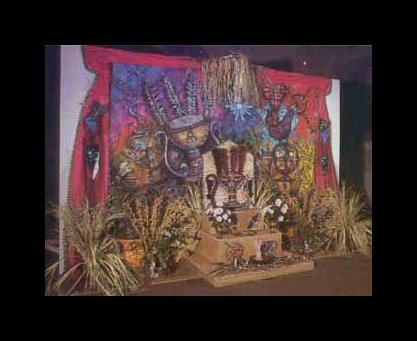Juan Boza (1941-1991)
Get a Juan Boza (1941-1991) Certificate of Authenticity for your painting (COA) for your Juan Boza (1941-1991) drawing.
For all your Juan Boza (1941-1991) artworks you need a Certificate of Authenticity (COA) in order to sell, to insure or to donate for a tax deduction.
Getting a Juan Boza (1941-1991) Certificate of Authenticity (COA) is easy. Just send us photos and dimensions and tell us what you know about the origin or history of your Juan Boza (1941-1991) painting or drawing.
If you want to sell your Juan Boza (1941-1991) painting or drawing use our selling services. We offer Juan Boza (1941-1991) selling help, selling advice, private treaty sales and full brokerage.
We have been authenticating Juan Boza (1941-1991) and issuing certificates of authenticity since 2002. We are recognized Juan Boza (1941-1991) experts and Juan Boza (1941-1991) certified appraisers. We issue COAs and appraisals for all Juan Boza (1941-1991) artworks.
Our Juan Boza (1941-1991) paintings and drawings authentications are accepted and respected worldwide.
Each COA is backed by in-depth research and analysis authentication reports.
The Juan Boza (1941-1991) certificates of authenticity we issue are based on solid, reliable and fully referenced art investigations, authentication research, analytical work and forensic studies.
We are available to examine your Juan Boza (1941-1991) painting or drawing anywhere in the world.
You will generally receive your certificates of authenticity and authentication report within two weeks. Some complicated cases with difficult to research Juan Boza (1941-1991) paintings or drawings take longer.
Our clients include Juan Boza (1941-1991) collectors, investors, tax authorities, insurance adjusters, appraisers, valuers, auctioneers, Federal agencies and many law firms.
We perform Juan Boza art authentication, appraisal, certificates of authenticity (COA), analysis, research, scientific tests, full art authentications. We will help you sell your Juan Boza or we will sell it for you.
Schooled at San Alejandro, Juan Boza was one of the leading artists in Afro-Cuban art. He was expelled from San Alejandro, as well as the National Art School, for political reasons. Shortly thereafter, he worked as a lithographer in the 1970’s, but was also fired because many artists were being censored and excluded by the government during that time.
Like many other Cubans, he fled on the 1980 Mariel lift, living in Key West, FL for a while, and finally settling in New York. Boza left Cuba not only to escape political oppression, but as a result of suicidal thoughts.
A student and protégé of Wilfredo Lam, many compare and contrast the two in terms of their extensive use of Afro-Cuban imagery. Boza was quoted as being very involved in his Afro-Cuban heritage, and was devoted to their religion, morals and ways of living. His art was a reflection of his own personal experiences, and became increasingly Afro-Cuban based after he received political asylum in the United States. Like so many others, he felt a sense of displacement and was alone in the States. It was only through painting images of home and his culture that he made his way in the United States.
Mainly, Boza was known for his installation pieces, featuring Afro-Cuban imagery and mixed media. He would create altars, almost shrines, of native masks, foliage, flowers, colorful drapery and other symbolic elements of Afro-Cuban history. His most famous installation was “The Legend of Sese-Eribo” (1987).

Though Boza rarely created oil canvas pieces, he became quite well-known as a lithographer and graphic artist as well. He mainly created lithos in the 1970’s, and due to his struggles with the government as a controversial artist, surely many of them were destroyed. However, much of his contemporary work most likely still exists, and to own one of his lithographs would be not only a remarkable piece of history, but a valuable piece of art.
One way to tell whether you have a Juan Boza lithograph or mixed media prints is to look at the style. Compare it to one of Wilfredo Lam’s prints—if it looks similar, then you may have a Boza. He was a student of Lam’s and was very fond of his work, which one can see reflected in his work. Boza was never successful as an oil painter, but worked wonders with graphics. Some of his mixed-media prints include magazine cutouts and surreal, dream-like images.
Interestingly enough, there is another Juan Boza in the world. Nicaraguan artist Juan Boza Gutierrez is a contemporary potter and ceramics painter. Though his work could never be confused with the Cuban Boza, his name may be, and might cause confusion.
Today, his work is owned in private collections, as well as in museums in the United States, London, and Mexico. Do you think you may own an original Juan Boza? Contact Art Experts. We would be glad to help you authenticate a piece of Afro-Cuban art by this great Cuban master.
Reviews
1,217 global ratings
5 Star
4 Star
3 Star
2 Star
1 Star
Your evaluation is very important to us. Thank you.
